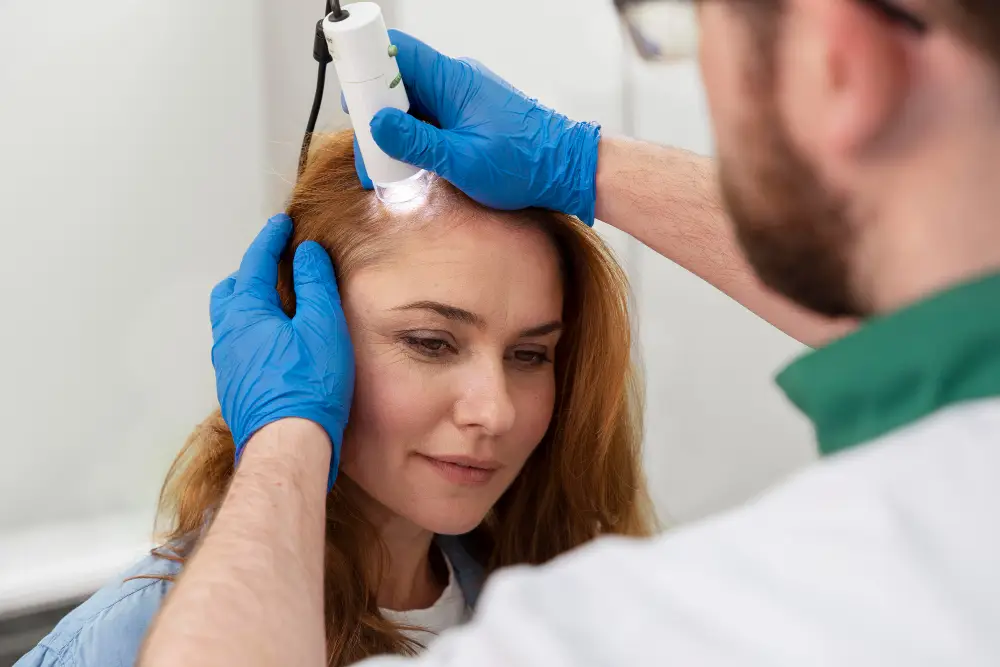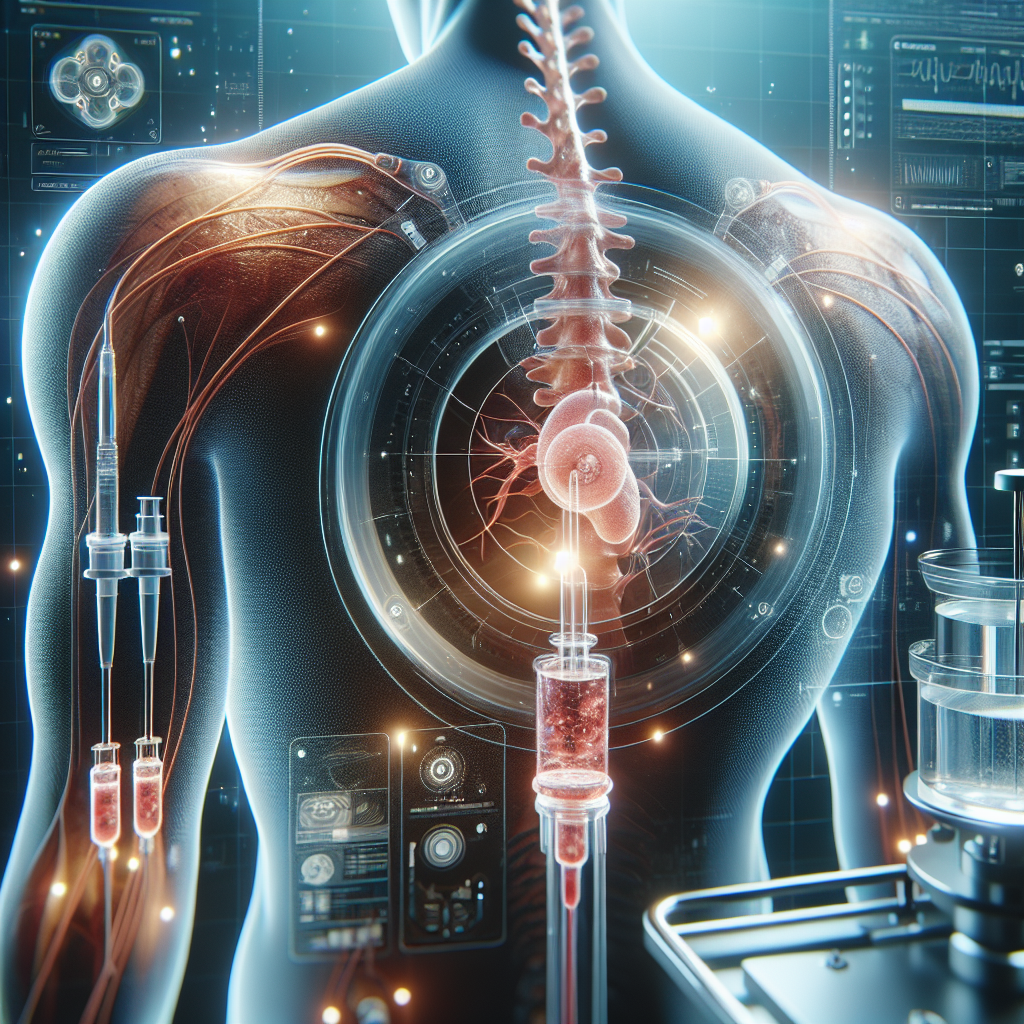
Stem Cell Options for Spinal Stenosis: Understanding Your Pathways to Improved Mobility
Key Takeaways for Spinal Stenosis and Regenerative Care
- Spinal Stenosis Defined: Spinal canal narrowing can lead to chronic pain and significant mobility challenges, affecting quality of life for millions globally.
- Beyond Conventional Care: While traditional approaches offer symptom management, many patients seek pathways that address the underlying tissue health.
- Understanding Regenerative Approaches: Stem cell pathways represent an area of ongoing research focused on supporting the body’s natural regenerative processes, particularly relevant for conditions involving tissue degeneration like spinal stenosis.
- Colombia’s Growing Role: Pereira, Colombia, is emerging as a compelling destination for individuals considering advanced regenerative care, offering high standards within a supportive environment.
- Your Informed Decision: The journey to improved well-being begins with transparent information and a clear understanding of all available options, including the practical considerations of international care.
- Regencord’s Commitment: Our team in Pereira, Colombia, is dedicated to patient education and support, guiding individuals through the complexities of potential regenerative pathways with clarity and compassion.
Introduction: Navigating Your Journey Beyond Pain
Living with spinal stenosis can feel like being trapped, with each step or movement accompanied by discomfort, numbness, or weakness. This condition, characterized by the narrowing of the spinal canal, often in the lumbar region, impacts not just physical mobility but also profoundly affects one’s quality of life, independence, and mental well-being. For many, the search for relief extends beyond conventional pain management, leading to explorations of advanced, regenerative possibilities.
At Regencord, our team in Pereira, Colombia, understands the deep frustration and hope that accompanies this journey. We recognize that patients often feel overwhelmed by information, facing a difficult decision about their health pathways. Our commitment is to provide clear, compassionate, and comprehensive education, empowering you to make informed choices for your future. This guide aims to demystify the conversation around spinal stenosis and potential regenerative approaches, particularly the evolving field of stem cell pathways, and transparently present the unique advantages of considering care in Pereira, Colombia.
Our focus is on patient empowerment through knowledge, fostering an environment where your concerns are addressed, and your journey toward improved well-being is supported every step of the way. We understand that finding the right pathway for conditions like spinal canal narrowing involves careful consideration of many factors, from the nature of the treatment to the environment of care. Let’s embark on this educational journey together, exploring the landscape of possibilities for regaining your mobility and reclaiming your life.
The Stakes: Critical Implications of Spinal Canal Narrowing

Spinal stenosis is more than just a diagnosis; it’s a daily challenge that impacts millions globally, often leading to chronic pain, reduced mobility, and a significant decline in overall quality of life. The condition occurs when the spaces within your spine narrow, putting pressure on the spinal cord and the nerves that travel through the spine to your arms and legs. This narrowing can be caused by various factors, including age-related wear and tear, osteoarthritis, herniated discs, thickened ligaments, or bone spurs (osteophytes).
Understanding the Impact of Lumbar Spinal Stenosis
While spinal stenosis can occur in any part of the spine, lumbar spinal stenosis, affecting the lower back, is particularly common. The compression of nerve roots in this area can lead to a constellation of symptoms:
- Pain: Often radiating down the legs, sometimes described as sciatica.
- Numbness or Tingling: Sensations in the legs or feet.
- Weakness: In the legs or feet, affecting balance and stability.
- Cramping: In the calves or thighs, especially during walking.
- Neurogenic Claudication: Pain that worsens with walking or standing and improves with sitting or leaning forward.
The U.S. National Institutes of Health (NIH) highlights that these symptoms can progressively worsen, severely limiting a person’s ability to perform daily activities, exercise, and maintain an active lifestyle. This reduction in activity can lead to a vicious cycle of deconditioning, weight gain, and increased pain, making mobility improvement a critical goal for many patients.
The Psychological and Economic Burden
Beyond the physical discomfort, spinal canal narrowing carries a significant psychological toll. Chronic pain is closely linked to depression, anxiety, and sleep disturbances, eroding an individual’s sense of hope and autonomy. The constant management of pain and the limitations on activities can lead to social isolation and a diminished sense of purpose. Furthermore, the economic implications are substantial, encompassing direct medical costs (doctor visits, medications, physical therapy, imaging, potential surgery) and indirect costs such as lost productivity and income.
Recognizing the profound and multifaceted impact of spinal stenosis underscores the urgency and importance of exploring all potential avenues for relief and regeneration. Our team at Regencord deeply understands these stakes and is committed to helping individuals navigate these complex challenges with a focus on comprehensive well-being, aiming to support the journey toward improved health and mobility.
The Conventional Approach to Spinal Stenosis

When grappling with the symptoms of spinal stenosis, individuals typically encounter a range of conventional treatment options focused primarily on symptom management and, in some cases, surgical decompression. These approaches, while widely practiced, often come with their own set of considerations, leaving many patients searching for alternatives that might offer more fundamental support for tissue health or less invasive pathways to mobility improvement.
Non-Surgical Interventions
Initial treatment for spinal stenosis typically begins with conservative measures. These might include:
- Medication: Over-the-counter pain relievers (NSAIDs), muscle relaxants, or neuropathic pain medications are often prescribed to manage discomfort and inflammation. While helpful for short-term relief, they do not address the structural issues of spinal canal narrowing.
- Physical Therapy: Tailored exercise programs aim to strengthen core muscles, improve flexibility, and enhance posture, which can alleviate pressure on spinal nerves. Consistent adherence is key, and results can vary depending on the severity of the condition.
- Injections: Epidural steroid injections, often administered as a lumbar injection, can reduce inflammation and provide temporary pain relief. However, their effects are usually transient, and repeated injections carry their own risks and are not considered a long-term solution.
- Lifestyle Modifications: Weight management, ergonomic adjustments, and activity modification can help reduce stress on the spine.
While these non-surgical options can provide significant relief for some, many patients find their symptoms persist or worsen over time, prompting a re-evaluation of their treatment strategy.
Surgical Options for Spinal Stenosis
For individuals whose symptoms remain severe and debilitating despite conservative treatments, surgery may be considered. The primary goal of surgical intervention is to decompress the spinal cord and nerve roots, thereby relieving pressure and alleviating symptoms. Common surgical procedures include:
- Laminectomy: This is the most common surgical procedure for lumbar spinal stenosis. It involves removing part of the vertebral bone (lamina) to create more space within the spinal canal.
- Spinal Fusion: In some cases, particularly if the spine is unstable or a significant amount of bone has been removed, spinal fusion may be performed. This procedure permanently connects two or more vertebrae to stabilize the spine, but it can limit flexibility.
While surgery can be highly effective in reducing pain and improving mobility for carefully selected patients, it is an invasive procedure with inherent risks, including infection, bleeding, nerve damage, and potential complications from anesthesia. Recovery periods can be extensive, requiring significant rehabilitation, and there is no guarantee of complete symptom resolution. Furthermore, spinal fusion can alter biomechanics, sometimes leading to adjacent segment disease over time.
The decision to pursue surgery is a significant one, often weighed against the desire to avoid invasive procedures and seek pathways that might support the body’s natural processes of tissue regeneration. This landscape of options highlights why many individuals explore advanced approaches, seeking a more holistic and less invasive path to managing spinal stenosis and improving their quality of life.
The Pereira, Colombia Advantage: A Holistic Approach to Regenerative Care
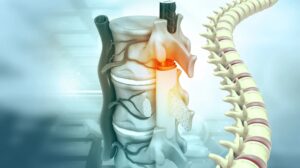
For individuals seeking advanced care for spinal stenosis, particularly those exploring regenerative pathways like stem cell treatment, the location and environment of care are as crucial as the treatment itself. Pereira, Colombia, and the team at Regencord offer a distinct advantage, blending high-quality medical infrastructure with a unique patient experience that goes beyond the clinical procedure.
A Hub for Advanced Medical Care
Colombia has rapidly emerged as a prominent destination for medical tourism, and Pereira, nestled in the heart of the “Coffee Axis,” is a shining example of this advancement. The country boasts a robust healthcare system, supported by the Colombian Ministry of Health and regulated by INVIMA (National Food and Drug Surveillance Institute), ensuring adherence to established standards for medical facilities and practices. Many medical professionals in Colombia receive international training, contributing to a high level of proficiency and care.
- Modern Facilities: Regencord operates within contemporary medical settings equipped with advanced technology necessary for sophisticated procedures like stem cell applications. These facilities maintain rigorous standards of hygiene and patient safety, comparable to leading institutions globally.
- Dedicated Patient Journey Support: We understand that seeking care internationally can be daunting. Our team at Regencord is committed to simplifying this journey, offering comprehensive support from your initial inquiry through post-treatment follow-up. This includes assistance with travel logistics, accommodation, local transportation, and facilitating clear communication between you and your care team. Our aim is to eliminate logistical anxieties, allowing you to focus entirely on your health. This deep commitment to the patient experience is one of our defining advantages, as observed in a synthetic contextual insight: “Many patients seeking advanced care for chronic conditions like spinal stenosis often feel rushed and unheard in traditional healthcare systems, leading to a profound sense of disempowerment. The journey to recovery is not just about a procedure; it’s about regaining agency, and a supportive environment that prioritizes comprehensive case review and personalized communication can significantly impact psychological well-being and treatment adherence.”
- Holistic Care Environment: Pereira itself contributes significantly to the healing process. Known for its pleasant climate, natural beauty, and warm hospitality, it provides a tranquil and supportive backdrop for recovery. Unlike the often sterile and hurried environment of many medical settings, Pereira offers a more relaxed pace, allowing for both physical recuperation and mental rejuvenation—a critical, yet often overlooked, component of managing chronic conditions. Another synthetic contextual insight highlights this: “Pereira, Colombia, offers a unique blend of high-standard medical infrastructure and a culturally rich, tranquil recovery environment, often at a lower cost basis than many Western nations. This allows for a more extended, less-stressed recovery period, fostering not just physical healing but mental rejuvenation, which is crucial for managing chronic pain conditions and embracing new treatment pathways.”
The Economic Value Proposition
For many patients, especially those from countries with high healthcare costs or limited insurance coverage for advanced regenerative therapies, the cost-effectiveness of care in Colombia is a significant factor. While never compromising on quality or safety, the operational efficiencies and different economic structures in Colombia often translate to more accessible pricing for stem cell treatment for spinal stenosis when compared to similar options in North America or Europe. This means that individuals who might otherwise find these pathways financially out of reach can consider them a viable option, receiving dedicated care without the prohibitive price tag.
Choosing Regencord in Pereira means opting for a path that balances advanced care with personalized support, economic accessibility, and a conducive environment for healing. Our team is here to ensure that your focus remains on improving your mobility and quality of life, while we manage the intricate details of your medical journey.
Your Personalized Guide: The Regencord Clarity Pathway Checklist
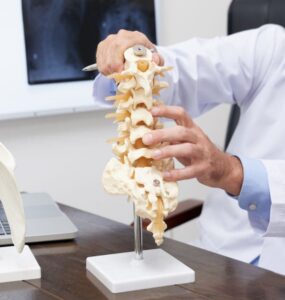
Navigating the options for spinal stenosis can be complex, especially when considering advanced treatments and international travel. To help you organize your thoughts and ensure you have all the necessary information, our team at Regencord has developed The Regencord Clarity Pathway Checklist. This tool is designed to guide you through the essential steps and considerations when exploring stem cell pathways for your condition, simplifying the process and empowering you with confidence.
The Regencord Clarity Pathway Checklist helps you:
- Understand Your Current Condition: Document your diagnosis, symptoms, previous treatments, and medical history. This forms the foundation for any discussion about potential new pathways.
- Clarify Your Goals: What do you hope to achieve with regenerative care? Improved mobility? Pain reduction? Enhanced quality of life? Clearly defining your objectives helps align expectations.
- Evaluate Treatment Options: Systematically compare conventional approaches with regenerative possibilities. This checklist encourages research into the scientific basis of each option, helping you understand what is known and what is still emerging in the field of tissue regeneration.
- Assess Personal Suitability: Consider factors such as your overall health, lifestyle, and commitment to the post-treatment process. Not all treatments are suitable for everyone, and a thorough assessment is crucial.
- Prepare for a Confidential Case Review: The checklist prompts you to gather relevant medical records, imaging (MRI, X-rays), and any questions you have for our team. This ensures a productive and comprehensive initial consultation.
- Logistical Planning: If considering international care, the checklist guides you through thought processes regarding travel, accommodation, and support systems, helping to demystify the practical aspects of your journey to Pereira.
How The Regencord Clarity Pathway Checklist Supports Your Journey:
- Empowerment Through Information: By systematically addressing key areas, the checklist ensures you feel informed and in control of your decision-making process, rather than overwhelmed.
- Structured Decision-Making: It provides a clear framework, allowing you to move through complex considerations step-by-step, helping to address information gaps.
- Facilitates Productive Conversations: With your questions organized and information at hand, your confidential case review with our team becomes more focused and beneficial, allowing us to provide tailored insights.
- Reduces Anxiety: By breaking down a potentially daunting process into manageable tasks, the checklist helps alleviate common logistical anxieties often associated with exploring advanced medical care abroad.
We invite you to utilize The Regencord Clarity Pathway Checklist as your companion in exploring regenerative care for spinal canal narrowing. It’s a testament to our commitment to transparent communication and patient-centric support, designed to ensure you feel confident and prepared for every step of your pathway towards improved well-being.
Our Regenerative Philosophy: Supporting Your Body’s Potential
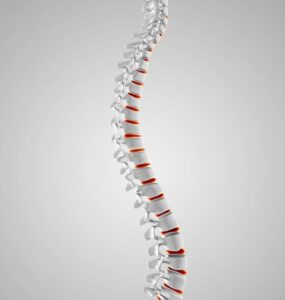
At Regencord in Pereira, Colombia, our approach to conditions like spinal stenosis is rooted in a regenerative philosophy—one that seeks to support and enhance the body’s intrinsic abilities for healing and repair. We understand that conditions involving spinal canal narrowing often stem from degenerative processes affecting cartilage, bone, and soft tissues. Our focus is on exploring pathways that may contribute to tissue regeneration and improve the overall environment of the spine, rather than solely masking symptoms or relying on invasive alterations.
Understanding Stem Cell Pathways for Spinal Stenosis
The concept of using stem cells for spinal stenosis involves leveraging the unique properties of these cells. Stem cells are undifferentiated cells that have the remarkable ability to develop into many different cell types and to self-renew. In the context of musculoskeletal conditions, research highlighted by institutions like the NIH and numerous PubMed-indexed journals suggests their potential role in:
- Modulating Inflammation: Reducing the inflammatory processes that often contribute to pain and tissue degradation in spinal stenosis.
- Supporting Tissue Health: Contributing to the health of surrounding tissues, which can be beneficial in areas affected by spinal canal narrowing.
- Promoting a Favorable Environment: Creating an environment conducive to natural healing processes within the affected spinal segments.
It is important to emphasize that stem cell pathways for spinal stenosis are an evolving field of study, with ongoing clinical trials listed on platforms like ClinicalTrials.gov continuing to explore their full scope and efficacy. Our team is dedicated to staying informed about these developments, ensuring that any pathways considered are grounded in the best available understanding.
Our Non-Promissory, Educational Approach
We maintain a strictly educational and non-promissory stance. We do not assert unverified clinical superiority or guarantee outcomes. Instead, our philosophy centers on:
- Evidence-Informed Discussion: We provide information based on credible scientific references from organizations such as the NIH and peer-reviewed literature. We believe in presenting the current understanding of regenerative medicine transparently, acknowledging both its potential and its limitations.
- Rigorous Case Review: Every individual’s case is unique. Our process involves a thorough, confidential review of your medical history, imaging, and overall health profile to determine if a regenerative pathway might be a suitable consideration for you. This meticulous evaluation is paramount in establishing appropriate expectations and ensuring ethical care.
- Patient Empowerment: We believe that an informed patient is an empowered patient. Our team is here to answer your questions, clarify complex medical concepts, and guide you through the decision-making process without pressure. We respect your autonomy and your right to choose the pathway that aligns best with your health goals and personal values.
- Holistic Well-being: Our care extends beyond the procedure itself. We emphasize the importance of a supportive recovery environment, nutritional considerations, and lifestyle adjustments that can optimize your overall well-being and complement any regenerative efforts for improved mobility and comfort.
By focusing on this regenerative philosophy, we aim to offer a thoughtful, considered approach for those seeking to address spinal canal narrowing. Our commitment is to partner with you, providing the information and support needed to make a confident decision about potentially supporting your body’s own regenerative capacity.
Overcoming Common Hesitations: Why Seeking Clarity is a Strategic Advantage
The decision to explore advanced treatments for spinal stenosis, especially internationally, often comes with a unique set of questions and hesitations. Our team at Regencord recognizes these concerns as valid and vital parts of your decision-making process. Addressing them directly and transparently is fundamental to building trust and empowering you with clarity.
“Is Stem Cell Treatment Legitimate or Just Hype?”
It’s natural to approach innovative treatments with a degree of skepticism, particularly when information can be conflicting. The field of regenerative medicine, including stem cell pathways, is indeed evolving. Our approach at Regencord is to focus on established protocols and work within a clear regulatory framework, as overseen by bodies like INVIMA in Colombia.
We emphasize the importance of understanding the foundational science, as presented by sources like the NIH, which continues to fund research into regenerative therapies. Our discussions center on how these pathways aim to support the body’s natural healing rather than offering a “miracle” solution. We guide you towards understanding that while research is ongoing, specific applications are being carefully explored for their potential to contribute to tissue health. A thorough, confidential case review is designed to help you discern if a regenerative pathway aligns with what is currently understood and ethically considered.
“Is Traveling to Colombia for Medical Care Safe? What About Quality Standards?”
Concerns about safety and quality when considering international medical care are paramount, and we address them directly. Colombia has invested significantly in its healthcare infrastructure, and cities like Pereira boast modern, well-equipped medical facilities. The Colombian Ministry of Health and INVIMA provide oversight, ensuring that medical practices and facilities adhere to specified standards.
Many medical professionals in Colombia receive extensive training, often internationally, contributing to a high level of proficiency. Pereira, in particular, has a growing reputation as a welcoming and safe destination for medical travelers. Our patient advocacy team provides comprehensive support, from assisting with travel arrangements and accommodation to ensuring a safe and comfortable experience on the ground. We aim to transform any apprehension about the unknown into an understanding of a well-regulated and supportive system.
“The Process of International Medical Travel Seems Overwhelming. Where Do I Start?”
The thought of coordinating international travel with medical appointments can indeed seem daunting. This is precisely where Regencord’s patient advocacy team becomes your strategic advantage. We specialize in demystifying this process, transforming a potentially complex journey into a manageable, supported pathway.
From your very first contact, we outline a clear, step-by-step patient journey. This includes assistance with initial case review, helping you gather necessary medical records, facilitating virtual consultations, guiding you through travel logistics, arranging local transportation, and ensuring you have comfortable accommodation. Our team acts as your dedicated liaison, streamlining communication and providing on-ground support, allowing you to focus on your health and recovery. The Regencord Clarity Pathway Checklist further breaks down these steps, building confidence and clarity.
“Will This Be Too Expensive, or Will My Insurance Cover It?”
Financial considerations are a significant factor for many. We are transparent about the potential for significant cost savings for stem cell treatment for spinal stenosis compared to similar advanced care options in many Western countries. While it’s true that most international elective medical procedures, particularly regenerative therapies, are not typically covered by standard health insurance plans, the overall value proposition in Colombia can be compelling.
When considering the cost, it’s important to look beyond just the procedure itself. Factor in the quality of care, the dedicated patient support, the serene recovery environment in Pereira, and the potential for improved mobility and quality of life. For many, the more accessible pricing in Colombia makes these advanced pathways a financially viable alternative, allowing them to access care they might otherwise consider out of reach. We provide clear pricing information during your confidential case review, ensuring you have a full understanding of the investment involved.
Seeking clarity on these hesitations is not just about getting answers; it’s about making an empowered decision. Our team is here to provide the information and support you need to move forward with confidence.
Glossary of Key Terms
- Spinal Stenosis:
- A condition characterized by the narrowing of the spaces within your spine, which can put pressure on the spinal cord and the nerves that travel through the spine.
- Spinal Canal Narrowing:
- Another term for spinal stenosis, specifically referring to the reduction in the space containing the spinal cord and nerve roots.
- Lumbar Spinal Stenosis:
- Spinal stenosis that occurs in the lower back (lumbar region), often causing pain, numbness, or weakness in the legs.
- Stem Cell Treatment:
- A broad term referring to the use of stem cells, which are undifferentiated cells with the ability to develop into various cell types, to support the body’s natural regenerative and healing processes.
- Regenerative Medicine:
- A field of medicine that aims to replace, engineer, or regenerate human cells, tissues, or organs to restore or establish normal function.
- Lumbar Injection:
- Medical procedures involving the injection of substances (e.g., corticosteroids, regenerative substances) into the lumbar region of the spine to reduce inflammation or support tissue health.
- Mobility Improvement:
- The enhancement of a person’s ability to move freely and easily, a common goal in treatments for spinal stenosis.
- Tissue Regeneration:
- The process of renewal, restoration, and growth that makes tissues resilient to damage, often facilitated by the body’s own reparative mechanisms.
- Neurogenic Claudication:
- Pain, numbness, or cramping in the legs that occurs with walking or standing and is relieved by sitting or leaning forward, typically associated with lumbar spinal stenosis.
- Laminectomy:
- A surgical procedure to remove part of the lamina (a bone arch in the vertebra) to create more space for the spinal cord and nerves.
- Spinal Fusion:
- A surgical procedure that permanently connects two or more vertebrae in your spine, often performed to stabilize the spine.
- INVIMA:
- Colombia’s National Food and Drug Surveillance Institute, responsible for regulating health products and ensuring public health standards.
Frequently Asked Questions (FAQ) About Stem Cell Pathways for Spinal Stenosis
What exactly is spinal stenosis, and how does it cause pain?
Spinal stenosis refers to the narrowing of the spinal canal, which is the space that houses your spinal cord and nerve roots. When this space becomes constricted, it can put pressure on these nerves, leading to symptoms like pain, numbness, tingling, and weakness in your back, buttocks, and legs. This pressure often worsens with certain movements, like standing or walking.
How do stem cell pathways differ from conventional treatments for spinal stenosis?
Conventional treatments like physical therapy, medication, or steroid injections primarily focus on managing symptoms and reducing inflammation. Surgical options aim to physically decompress the nerves. Stem cell pathways, in contrast, explore supporting the body’s natural ability for tissue regeneration and modulating the inflammatory environment in the affected spinal area. This approach seeks to address underlying tissue health, rather than just symptom management or structural alteration.
Is stem cell treatment for spinal stenosis considered a proven “cure”?
No, it’s important to understand that stem cell pathways for spinal stenosis are an evolving field. We do not use the term “cure” or guarantee outcomes. The objective is to explore approaches that may support the body’s regenerative processes, potentially leading to improved comfort and mobility. Research, as highlighted by institutions like the NIH, is ongoing to better understand the full scope and benefits of these applications.
What kind of results can I realistically expect from regenerative pathways?
Outcomes can vary significantly among individuals, depending on the severity of their condition, overall health, and adherence to post-treatment recommendations. While many patients seek improved mobility and reduction in discomfort, specific results cannot be guaranteed. Our team focuses on managing expectations through thorough, transparent discussions based on your individual case review.
Why should I consider Pereira, Colombia, for stem cell pathways for spinal stenosis?
Pereira, Colombia, offers a compelling combination of modern medical infrastructure, adherence to regulatory standards (like INVIMA), and a highly supportive patient experience. The cost-effectiveness of care here, compared to many Western nations, makes advanced treatments more accessible. Furthermore, the tranquil and welcoming environment of Pereira can significantly contribute to a more relaxed and effective recovery process, fostering overall well-being.
What support does Regencord offer for international patients?
Our team at Regencord provides comprehensive support for international patients considering stem cell pathways for spinal stenosis. This includes assisting with your confidential case review, helping you gather necessary medical documents, facilitating travel logistics (accommodation, local transport), and ensuring clear communication with your care team throughout your journey. We aim to make the process as smooth and stress-free as possible.
How do I know if I’m a candidate for stem cell pathways for spinal stenosis?
Determining your suitability requires a thorough, confidential case review by our medical team. This involves evaluating your medical history, current symptoms, previous treatments, and diagnostic imaging (like MRI scans). We look at various factors to assess if a regenerative pathway aligns with your specific condition and health goals. Contact us to initiate this review.
What is the typical timeline for the process, from initial contact to potential treatment?
The timeline can vary. It typically begins with a confidential case review and discussion, which can take several days to a few weeks depending on how quickly you can provide necessary medical records. If you are deemed a potential candidate, planning for international travel and the treatment itself will be coordinated. Our team will provide a personalized timeline estimate during your initial consultation.
Take the Next Step: Discover Your Pathways
If you or a loved one are exploring advanced options for spinal stenosis and seeking a patient-centric approach to care, the team at Regencord in Pereira, Colombia, is here to help.
We invite you to discover if you are a candidate for the regenerative medicine pathways available. Your journey toward improved mobility and a better quality of life begins with informed understanding.
Contact us for a confidential case review. Let us provide the clarity and support you need to make a confident decision about your health future.
